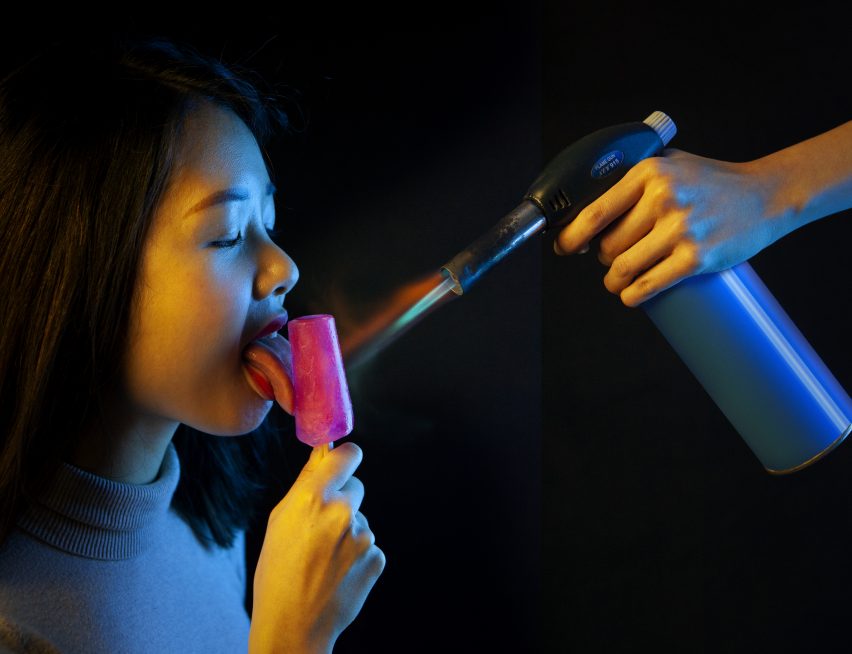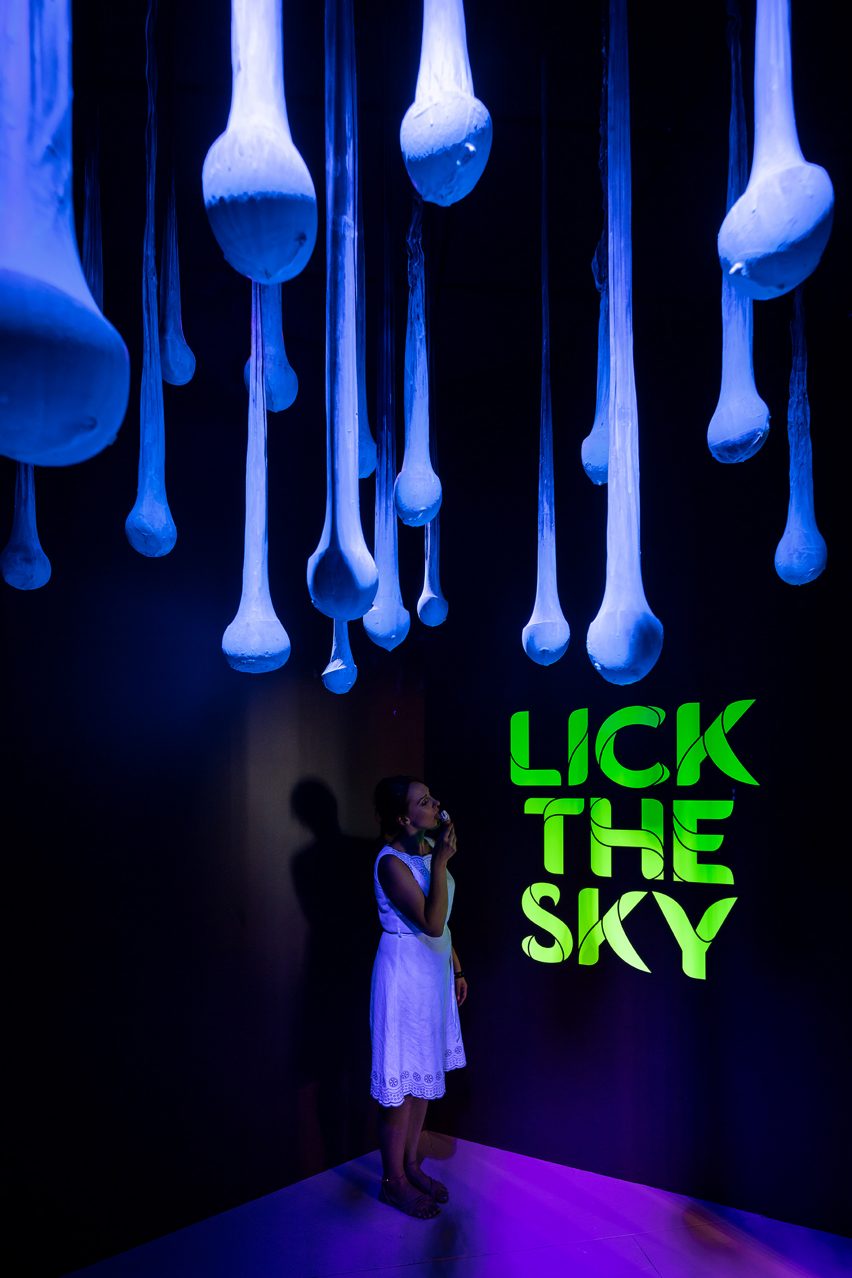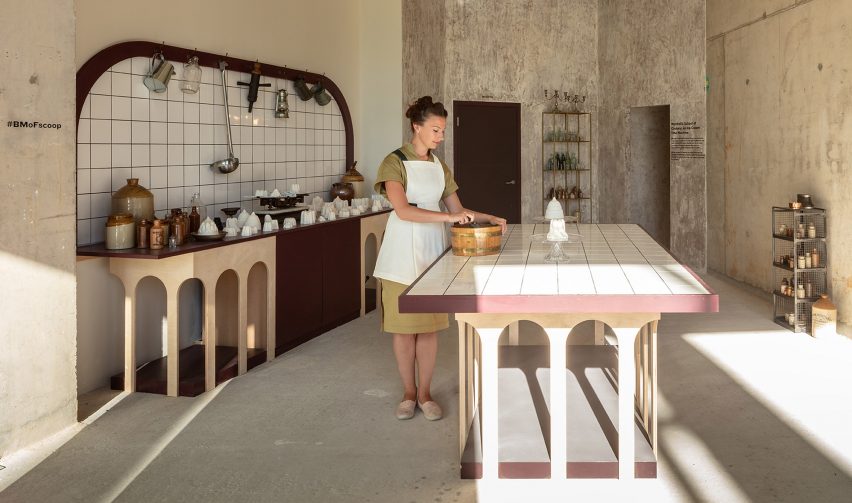Bompas & Parr creates "world's first non-melting ice lolly"
Food design studio Bompas & Parr has invented the "world's first non-melting" ice lolly, inspired by a frozen composite material pioneered during the second world war.
While the ice lolly does eventually melt, unlike a conventional lolly, the invention is capable of staying intact for an hour in 24 degree heat.
According to the London-based studio, the long-lasting lollies were designed with global warming in mind, driven by the increasing desire for frozen treats to keep us cool as temperatures rise.

Bompas & Parr adapted an old recipe for super-strength ice, which was developed by English inventor Geoffrey Pyke during the second world war to help the armed forces.
The composite material was made from a combination of sawdust and wood pulp evenly dispersed in water, and then frozen. The resulting substance is remarkably strong.
Due to its similarities with concrete it became known as Pykrete – a combination of the inventor's surname and the material.
By replacing the sawdust and wood pulp with fruit fibres, Bompas & Parr developed their own edible version of Pykrete in the form of ice lollies.

The Pykrete-inspired lollies will be showcased at Scoop on 22 August 2018 – an exhibition put on by the British Museum of Food – where visitors will be able to taste the non-melting lollies for one day only.
The exhibition, which is located in London's Gasholders buildings in King's Cross, explores how our relationship with ice cream has evolved through the years, featuring a futuristic luminescent cave with glow-in-the-dark ice cream and a sub-zero ice chamber.
"We wanted to celebrate Pyke's invention in a fitting way, especially as King's Cross was at the centre of the London ice trade, and the capital's first ice wells are located just off Regent's Canal!" said the studio.
Pyke's composite was pioneered during the second world war as an alternative material that potentially could be used to build impervious structures, such as runways, in the middle of the ocean.
These large floating runways could have been used by aircraft protecting Atlantic shipping convoys that were otherwise beyond the reach of land-based aircraft.
Pyke discovered that ice could be manufactured for just one per cent of the energy needed to make the same mass of steel, and therefore suggested that an iceberg – natural or artificial – could be levelled out to create a floating runway.

While Pyke's project was eventually abandoned due to rising costs and the development of newer aircrafts, his invention has not gone to waste.
The studio has adapted his recipe using their own "top secret ingredients" – they are not disclosing any more information about the lollies or their recipe until visitors see for themselves.
If the prototype lollies are successful, Bompas & Parr hopes to soon develop a product that they can sell in supermarkets across the world.
This is not the first time the food design studio has experimented with frozen treats. The duo previously created a luminescent, glow-in-the-dark ice cream that allows cinema-goers to see their snacks in the dark.